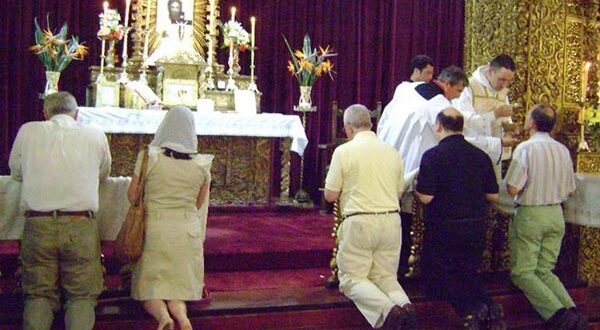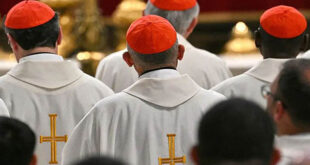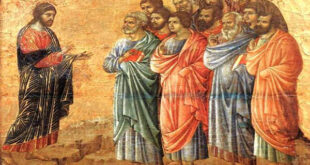The Latin expression actuosa participatio, translated as “active participation,” is a central concept in the liturgical teaching of the Catholic Church, especially emphasized during the Second Vatican Council. But what does this phrase truly mean, and how can we live it fully in today’s world? This article seeks to deeply explore this teaching, its theological roots, its current relevance, and practical ways to apply it in our daily lives, drawing inspiration from the perspective of Saint Thomas Aquinas.
The Origin and Meaning of ‘Actuosa Participatio’
The term actuosa participatio is primarily found in Sacrosanctum Concilium, the Constitution on the Sacred Liturgy of the Second Vatican Council, which states that “the Church earnestly desires that the faithful participate actively in the sacred liturgy” (SC 14). This phrase does not merely refer to external actions, such as singing, responding, or performing a liturgical ministry, but to a full engagement of the heart, mind, and soul in the Paschal Mystery being celebrated.
The goal of this participation is not only to understand what happens in the liturgy but to be transformed by it. The liturgy is an encounter with Christ, who, as the head of the Mystical Body, invites us to unite ourselves with His redemptive sacrifice.
Theological Perspective: Saint Thomas Aquinas’s Vision
Saint Thomas Aquinas provides a profound theological foundation for understanding actuosa participatio. In his Summa Theologiae, he explains that the ultimate purpose of liturgy is the glorification of God and the sanctification of humanity (STh II-II, q. 81, a. 1). According to him, external worship, such as words, gestures, and songs, must be an expression of internal worship, where the mind and heart are lifted to God.
For Saint Thomas, active participation is not just a matter of outward action but of inner disposition. Faith, devotion, and love are essential attitudes for authentic participation. He emphasizes that humans partake in divine mysteries through grace, which unites us to Christ as members of His Body.
‘Actuosa Participatio’ in Today’s Context
In our time, we live in a world saturated with distractions and noise. The liturgy can easily become routine if we do not cultivate the inner disposition to live it fully. Nevertheless, the call to active participation remains vital, especially in a culture that often separates the spiritual from the everyday.
Moreover, there is a risk of reducing actuosa participatio to a series of external activities. While these can be helpful, they must never overshadow the main goal: a deeper union with God.
How to Live ‘Actuosa Participatio’ Today
- Interior and Exterior Preparation: Actuosa participatio begins before arriving at Mass. This involves preparing our hearts through prayer, an examination of conscience, and, when necessary, the sacrament of confession. Saint Thomas highlights that sanctifying grace is essential for fully participating in the sacraments.
- Understanding the Liturgy: Knowing the meaning behind the gestures, words, and prayers of the liturgy helps us connect more deeply with what we celebrate. Dedicating time to study the Mass, the liturgical year, and the writings of the Church Fathers can greatly enrich our experience.
- Living the Liturgy with Devotion: Devotion, according to Saint Thomas, is an act of the will directed toward God (STh II-II, q. 82, a. 1). Active participation means being aware that every word and action has a spiritual purpose. Devotion transforms routine into worship.
- Union with Christ in the Eucharist: The Eucharist is the heart of the liturgy. Living actuosa participatio means approaching the Lord’s table with faith and reverence, aware that we unite ourselves to Christ’s redemptive sacrifice.
- Extending the Liturgy to Daily Life: The liturgy does not end when we leave the church. It calls us to live as true disciples of Christ in our work, family, and community. Saint Thomas notes that our external actions should reflect the inner transformation we receive in the sacraments.
- Fostering a Spiritual Community: The liturgy is the action of the Body of Christ, not merely an individual act. Active participation also means fostering communion with our brothers and sisters in faith, especially those in spiritual or material need.
Spiritual Relevance in Our Time
In a world marked by individualism, actuosa participatio reminds us that we are part of a community of faith, the Mystical Body of Christ. It invites us to rediscover the richness of the liturgy as an inexhaustible source of grace that not only transforms our lives but also empowers us to transform the world.
Conclusion: Rediscovering the Heart of the Liturgy
Living actuosa participatio is answering Christ’s call to be true worshipers in spirit and truth (Jn 4:23). It is rediscovering the transformative power of the liturgy and allowing it to permeate every aspect of our lives.
As disciples, we are invited to renew our relationship with God through the liturgy, deepen our participation in the Paschal Mystery, and bring that experience to the world. May the example and teaching of Saint Thomas Aquinas inspire us to more fully partake in the divine life offered to us at every Mass. In doing so, we will fulfill our calling to be a light in the world, radiating the grace we receive at the altar.






